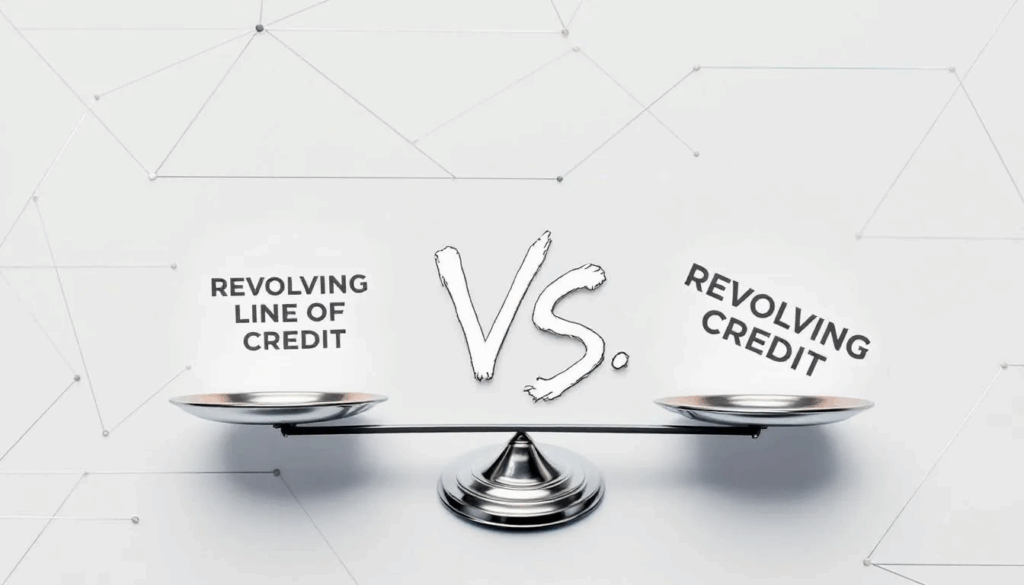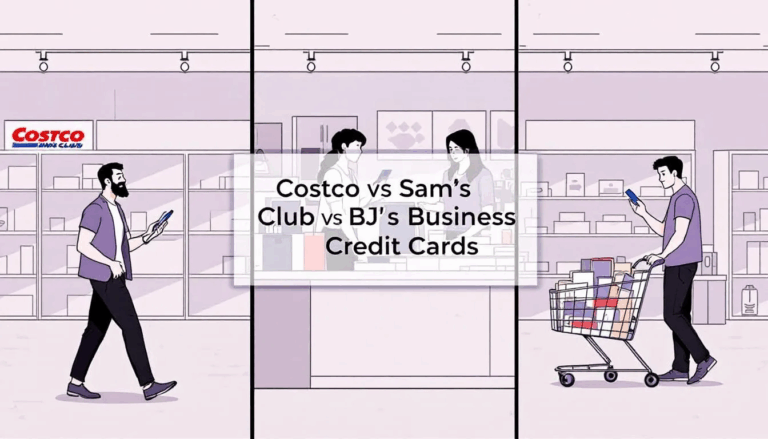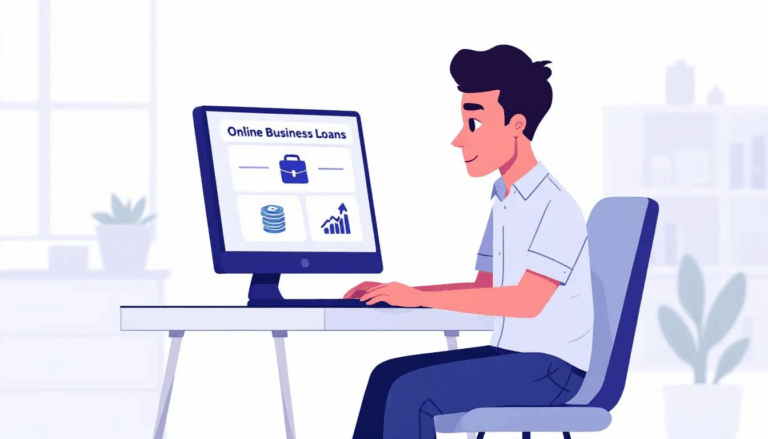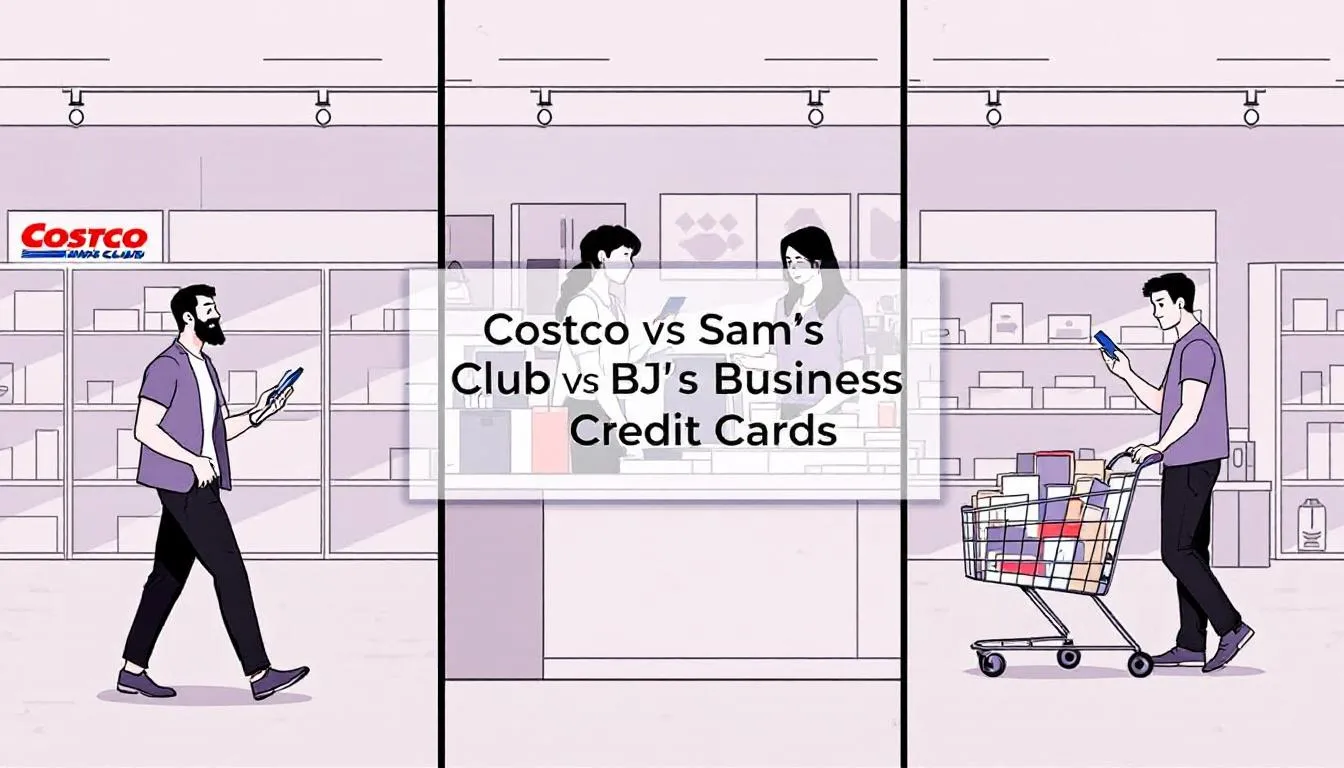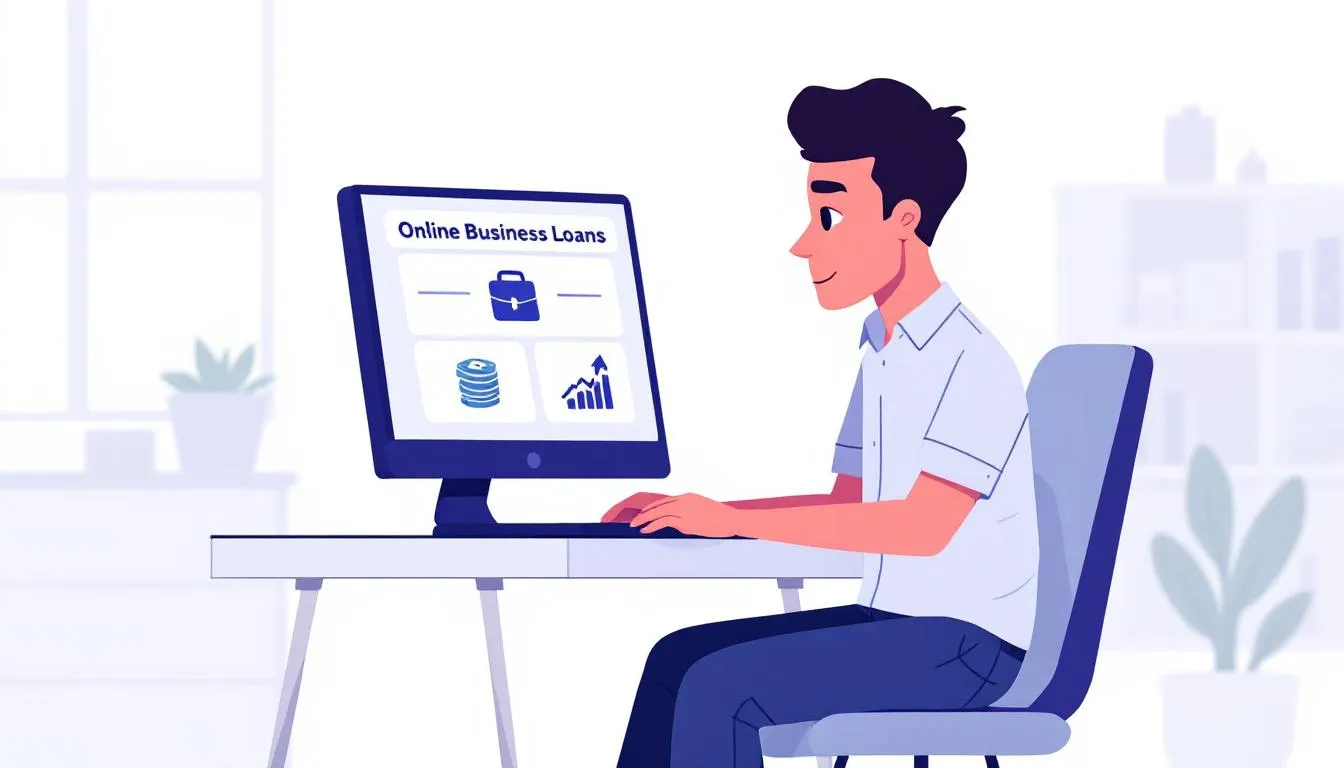What is a Revolving Line of Credit?
A Revolving Line of Credit refers to an agreement that permits an account holder to borrow money repeatedly up to a set dollar limit. Each payment, minus the interest and fees charged, replenishes the amount available to the account holder.
This type of funding is ideal for short-term purchases and expenses. The structure of a revolving line allows you to dip into your fixed amount frequently and pay back quickly to help manage any bumps in the road.
United Capital Source can facilitate revolving lines of credit for small businesses up to $450,000. A business line of credit is a must-have if you want to handle the increased demand that may come up in your business or to have a financial lifeline when you need it.
The best part about a revolving line of credit is that you only accrue interest charges and have to make payments when you use it. You can access funds as needed for various business expenses, including rent, payroll, inventory, marketing, and improvements.
How Does a Revolving Line of Credit Work?
As stated previously, a line of credit works similarly to a credit card; however, it has a set term when the line is opened. The most common terms for a line of credit are about 5-10 years. Once the term is over, the borrower will need to apply for a new line of credit.
When you borrow from a revolving account, the amount of available credit goes down and goes back up when you repay it. The bank or financial institution that has the line of credit can transfer funds to your business bank account.
Generally, you only accrue interest charges when you borrow funds and the credit line is used. Payments and interest are typically calculated based on a monthly billing cycle, so it’s important to understand how each billing cycle affects your repayment obligations.
However, some credit lines charge an annual fee regardless of whether they are used. A higher interest rate is typically charged because of the convenience and flexibility of a business credit line compared to traditional loans. Revolving credit can come with variable interest rates that can adjust.
Revolving credit can be secured, requiring collateral, or unsecured, which does not require collateral and carries higher risk. Unsecured credit lines typically have higher interest rates. Using revolving credit responsibly can provide a safety net for unexpected business expenses.
How is a Revolving Credit Limit Determined?
A credit limit is the maximum amount a financial institution is willing to extend to a customer seeking the funds. The credit limit is generally determined by several factors, including credit score, payment history, whether the line is secured or unsecured, and the business’s revenue and profit levels, among other factors.
The bank will allow the agreement to continue if the account remains in good standing. Over time, the bank may raise the credit limit to encourage its most dependable customers to spend more. Conversely, the lender may decrease the limit or close the line altogether if the payment history is shoddy.
What Credit Score is Needed for a Revolving Credit Line?
A line of credit is considered an unsecured loan, meaning the bank will not require collateral to issue funds to someone with a less-than-ideal history on their file. Generally, borrowers applying for a revolving line of credit require a higher FICO score (Good to Excellent Credit) for credit approval than those seeking a revolving account, such as a credit card. For this reason, lenders typically rely on more factors to determine eligibility for a personal or business line of credit.
There are also secured lines of credit available for business and personal needs. The collateral used for these credit lines is generally real estate that the company owns or belongs to a homeowner/investor.
United Capital Source can facilitate business lines of credit for individuals with credit scores of 550 or higher, provided they have compensating factors beyond their credit history.
How is Interest Calculated on a Revolving Credit Line?
To use a revolving line of credit loan as intended, you should be clear on how revolving credit works, mainly how revolving interest is determined. Interest is calculated based on your principal balance amount with revolving lines of credit. You only accrue interest and start paying when funds are drawn.
See the example with the infographic below to learn how interest is calculated:
1. Determining Principal Balance
The outstanding principal balance for the previous month is used to compute interest on a revolving loan. You will not be charged interest on top of interest; you’ll only have to pay interest on the money you’ve drawn from the line. Consider the following scenario:
- Oct 1 – 10: With a $0 balance, no interest is accrued for ten days.
- October 11th: $100,000 is drawn from the line.
- October 21st: $50,000 is paid back and applied toward the principal balance.
- November 1st: Interest is charged on $100,000 for ten days and $50,000 for the remaining 11 days in October.
2. Interest Charge Calculations
The interest on a revolving line of credit is usually computed using actual days throughout a 360-day year. Like the one in the case below, some lenders employ a 365-day year. The balance is multiplied by the interest rate, then multiplied by the number of days in the month, divided by 365, to calculate interest on a revolving loan.
3. Revolving Interest Example
Let’s imagine your principal balance is $100,000, and your interest rate is 10% from October 11th to October 20th. Multiply 100,000 by 0.1, then divide by 365, and multiply by ten days. For those ten days, the interest fee is $273.97.
On October 21st, the line is paid down to $50,000. Now multiply the remaining 50,000 by 0.1, multiply by ten days, then divide by 365. When you add the two sums together, you get $410.96, which is the entire interest payable in October. For the rest of the month, your interest cost is $136.99.
Why Choose a Revolving Line of Credit?
Here are some of the key reasons small business owners choose a revolving line of credit.
A revolving line of credit can provide extra cash to cover unexpected expenses or support business growth.
Lower interest rates & fees
When choosing between revolving credit and revolving lines of credit, the most glaring difference for personal borrowers and business owners is the interest rate. When businesses borrow money, they know they will have to pay interest; however, the difference between a business line of credit and a business credit card can be substantial.
Although it pays to have both at your disposal, most small business owners would prefer to use a small business line of credit instead of business credit cards when they know they won’t be able to pay the loan amount within the credit card grace period.
A flexible method of financing
Revolving lines of credit are flexible, just like your business or personal life. Unlike an installment loan, you don’t need to worry about a set repayment term and making payments on the 1st of every month. One of the most attractive features of a revolving line of credit is the flexibility of drawing from your line when needed, without being obligated to take a lump sum and repay it over a set term.
Access to funds when you need them
Have you ever faced an emergency in your small business that required immediate funds to resolve the issue? Many companies encounter problems that require immediate access to working capital to fix. If you’re a restaurant owner, your oven or freezer may require a quick repair, or if you own a manufacturing business, you need to finance equipment to meet an order on time.
Or, if you’re a homeowner and need convenient access to home equity lines to repair your boiler or make other necessary repairs, having a credit line at the ready is essential. Some homeowners might even use personal lines of credit to pay off high-interest student loans or auto loans.
Generally, you can access the funds by transferring them into your checking account or using a card tied to the line. However, some lines of credit do not require a physical card for access, allowing you to draw funds directly without needing a card.
What is Revolving Credit?
Revolving credit refers to a type of credit account that allows borrowers to repeatedly borrow and repay funds up to a set credit limit, offering flexibility in how and when funds are used. When a lender issues an unsecured revolving credit account, it assigns the borrower a specific total credit limit. Credit typically ranges from a few hundred to several thousand dollars, depending on the borrower’s financial profile and creditworthiness. A revolving credit limit normally represents the maximum amount an account holder can borrow against the account.
This pre-approved limit is based on the client’s credit score, income, and credit history. Once the account is open, the borrower can use and reuse the account at their discretion. As purchases are made, the available credit decreases, and it is restored as payments are made. There is no set monthly payment with revolving credit accounts; however, interest accrues and is capitalized, just like with any other type of credit. Revolving credit accounts typically require a minimum monthly payment if you have a balance.
The revolving credit account remains open as long as the account is in good standing. A borrower may use the credit limit and access money repeatedly as long as they do not exceed the credit utilization maximum and make the minimum payment.
It’s essential to know your available credit limit to avoid overspending and maintain a healthy credit score. To understand how revolving credit works, remember that you can borrow up to your limit, repay what you owe, and then borrow again as needed. Suppose you make regular and consistent payments above the minimum required payments and make it a point to pay off any remaining balance. In that case, the lender may agree to increase your maximum limit.
Why Choose Revolving Credit?
In most cases, people opt for a personal or business line of credit due to the high-interest charges associated with a personal or business credit card. However, since credit approval for lines of credit is more stringent, most people opt for credit cards, which a credit card issuer typically provides. This is different from lines of credit, where funds are accessed directly without involving a credit card issuer. There are generally no origination fees with revolving credit, and you can easily apply online for most credit cards. Small business owners typically use business credit cards for everyday purchases. Many credit cards also offer a cash advance option, but these usually come with higher interest rates and fees.
There are also many credit offers, like travel rewards and points, that you can use wherever you shop. You can also take a cash advance if you need money quickly. Revolving credit typically allows business owners to cover ongoing expenses, unlike traditional loans that are used for a single investment. To avoid interest charges, it is essential to pay the full balance by the due date. Most revolving credit accounts never shut down unless payments are defaulted on, so consider them a reliable source of always-available credit.
Revolving Credit Management
Factors influencing credit scores include payment history, credit utilization, and the age of credit accounts. Staying aware of all expenses incurred is important for managing revolving credit effectively.
Understanding the relationship between statement balances, current balances, and minimum payments can help with effective account management. Paying off a credit card balance in full each month can help avoid interest charges.
Using no more than 30% of your available credit is recommended for maintaining good credit standings. The credit utilization ratio, which is the proportion of your available revolving credit that you are using, is a key factor in credit scoring—keeping this ratio under 30% can positively impact your credit score. Making on-time payments can help establish and improve a company’s credit score history.
Keeping older revolving accounts open can help improve your credit score. Late payments are reported to credit bureaus only after they are 30 days late and can negatively impact credit scores. Late fees can result from missed payments and can negatively impact credit scores.
How is Revolving Credit different from Installment Loans?
Many people use a combination of revolving and installment credit accounts as part of a healthy financial strategy. Installment loans provide a lump sum loan amount that you must pay back with regular payments. For example, a business term loan could provide funds for major purchases, such as equipment or commercial real estate.
Installment loans are typically repaid in regular, equal payments over a specified period of time. Interest rates on installment loans may be lower than those on revolving credit accounts if backed by collateral.
With installment loans, the amount borrowed is fixed and cannot be re-borrowed once paid off without a new application. In personal finance, auto loans and student loans are examples of installment loans, which are types of installment credit accounts. A combination of installment debt and revolving credit creates a healthy credit mix.
Revolving Credit vs. Line of Credit: It’s Your Choice
A line of credit and revolving credit are not the same as a traditional loan. With most installment loans, like mortgages or auto financing, you must specify what your money will be used for in advance. However, with lines of credit or revolving credit, it’s different—you can use this type of funding as you see fit. Revolving credit lines also do not require predetermined monthly payments.
Line of credit payments tend to be somewhat unpredictable. A line of credit allows you to draw funds up to a specific limit with no additional fees or costs until you start tapping into it for funds. Your regular monthly installments will be applied towards repaying the borrowed amount and any applicable interest charges incurred during the repayment period.
Secured credit accounts, such as home loans or car loans, typically offer lower rates than unsecured lines of credit. Lowering the rate for secured credit transactions can save you thousands in lifetime costs and allow refinancing options that are unavailable to those with an unpaid balance on their account.
If you’re planning to make a one-time purchase, consider opening an installment loan instead of applying for unsecured lines of credit. Suppose your goal is to achieve permanent debt consolidation or build equity in something like real estate over time. In that case, loans tailored to purchases such as cars and homes are often better than borrowing against old debts with new ones at higher rates.


